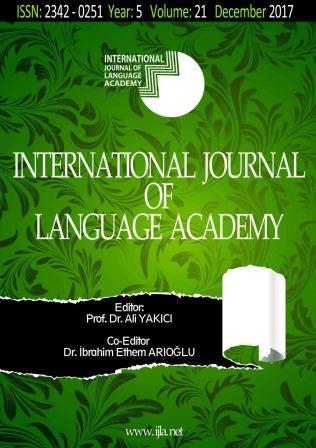Author :
Abstract
Mizah duygusu; dil, yüksek zihin kapasitesi gibi insanı diğer canlılardan ayıran bir özelliktir. Mizah genel olarak insanları güldüren bir şey olarak tanımlanır. İnsanların gülme unsurları yaşa ve bilişsel gelişimlerine göre değişmektedir. Bu nedenle yetişkinlerin ve çocukların güldükleri mizahi unsurlar farklılık göstermektedir. Hatta çocukların bilişsel gelişimlerine göre güldükleri mizah unsurları belirli yaş evrelerine göre değişmektedir.Çocuk, yaşadığı çevreyle baş etmeyi ve o çevreye uyum sağlamayı mizah aracılığıyla öğrenir. Çocuğun hayal gücünü ve yaratıcılığını geliştirdiğini düşündüğümüz mizah, çocuk edebiyatı kitapları aracılığıyla çocuğa iletilmelidir. Çocuk edebiyatı, çocuğa duyarlık kazandırma, duyuşsal, bilişsel ve sosyal gelişimine katkı sağlama işlevlerine sahiptir. Dolayısıyla çocuk edebiyatı kitaplarının çocuğun dünyasını yansıtması, çocukla arkadaşlık kurması ve gerçek yaşamda karşılaşacağı sorunlara çözüm yolları gösteren nitelikte olması gerekir. Bu nitelikteki kitaplar, entelektüel gelişimi teşvik edici, keyif verici özellikleriyle çocukların okuma hayatları boyunca kendi deneyimlerini anlamlandırmalarına da yardımcı olmaktadır.Bu çalışmanın amacı Saftirik serisindeki mizah unsurlarının tespit edilerek çocukların belirli gelişim evrelerinde nelere güldüğünü ortaya koymak ve serideki kitapları, mizahi türler açısından incelemektir.Çalışmada, nitel araştırma yöntemlerinden doküman incelemesi kullanılmıştır. Çalışmadan elde edilen veriler, “betimsel çözümleme” tekniği kullanılarak analiz edilmiştir. Araştırmada veri toplama aracı olarak Johnson (2010) tarafından geliştirilip Akıncı, (2015) tarafından Türkçeye uyarlanan “Resimli Çocuk Kitaplarında Yer Alan Mizahi Unsurları İnceleme Formu” kullanılmıştır. Çalışmanın sonucunda; gelişim evrelerine göre çocukların güldükleri mizahi unsurların en çok 3. evreye ait olduğu ve kitaplardaki mizahi unsur türlerinin durumsal mizaha ait olduğu tespit edilmiştir. Kitaplarda en fazla yer alan mizah türü ise; karikatürleşme esprileri olarak belirlenmiştir.
Keywords
Abstract
Sense of humor is a feature that distinguishes human from other living creatures through the ability to speak and the high intellectual capacity. Humor is generally defined as something that makes people laugh. The laughing elements of people vary according to their age and cognitive development. For this reason, the humorous elements that adults and children laughed differ greatly. Even humor elements that children laughed considering their cognitive development vary according to certain age stages.The children learn through humor to cope with the environment where they lived in and to adapt to that environment.The humor that we think that the children develops their imagination and creativity should be transferred to the child through the children’s literature books.Children’s literature has the functions that give sensitivity to the children and make contribution to their affective, cognitive and social development.Therefore, children’s literature books need to reflect the child’s world, make friends with the child, and find the solutions to the problems that they will face in real life.The books with these characteristics also help children to make sense of their own experiences during their reading life through the features that promote and exhilarate the intellectual development.The aim of this study is to identify the elements of humor in the Saftirik series, to reveal what children have been laughing in their certain developmental stages and to examine the books on the series in terms of humorous forms.Document review from qualitative research methods was used in this study.The data obtained from the study were analyzed using the technique “descriptive analysis”.The study used “Humorous Elements Survey Form in Illustrated Children’s Books” that was developed by Johnson (2010) as a data collection tool and adapted for Turkish by Akıncı (2015). Results of this study showed that the humorous elements at which the children had laughed according to their developmental stages mostly pertain to the third stage and that the types of humorous element found in the books relate to the situational humor. It was found that the most common type of humor in the books was the caricatured one.
